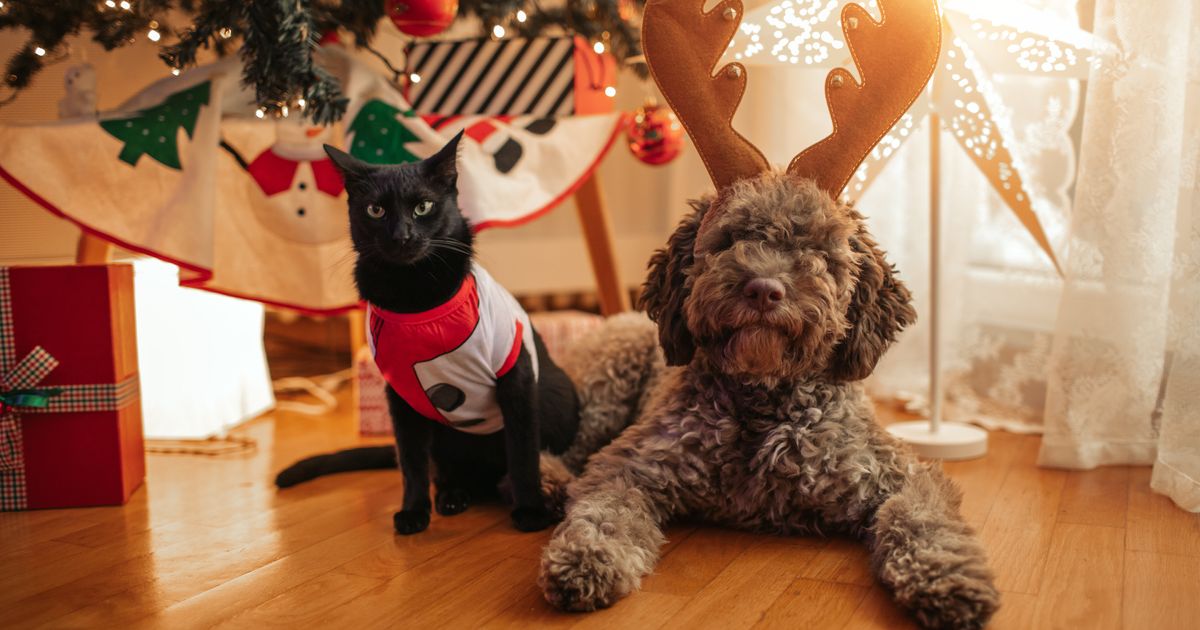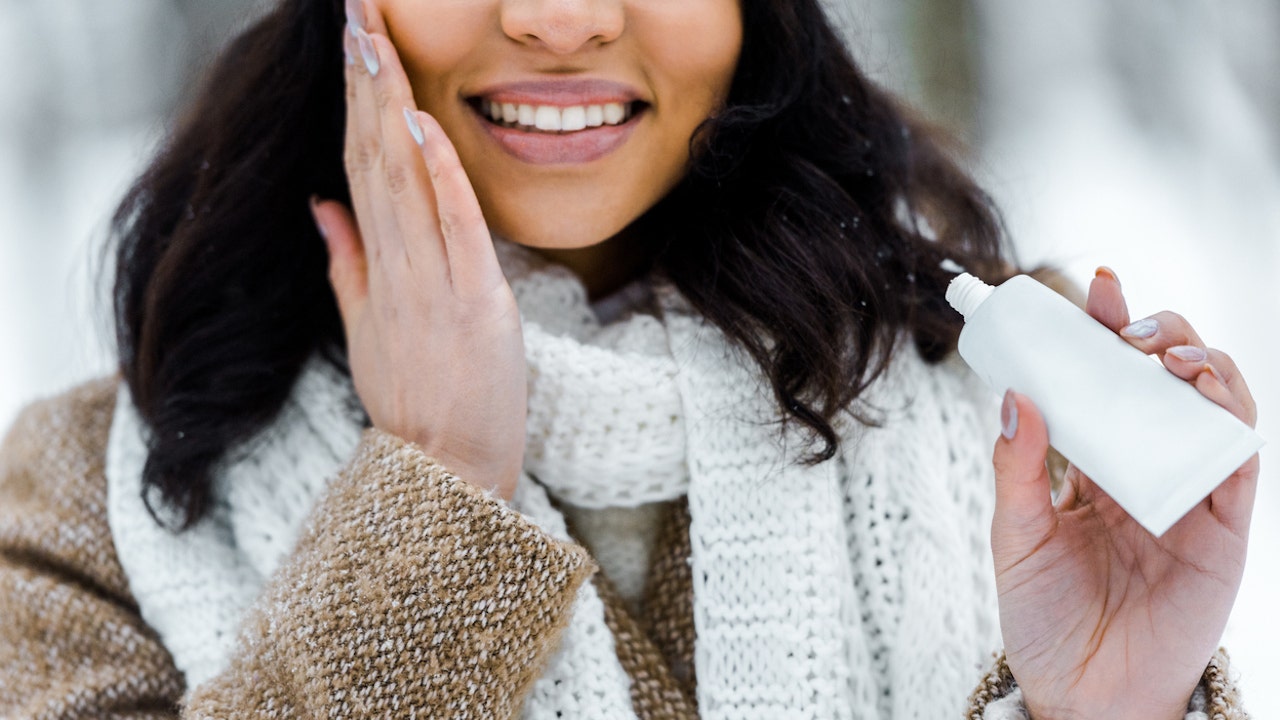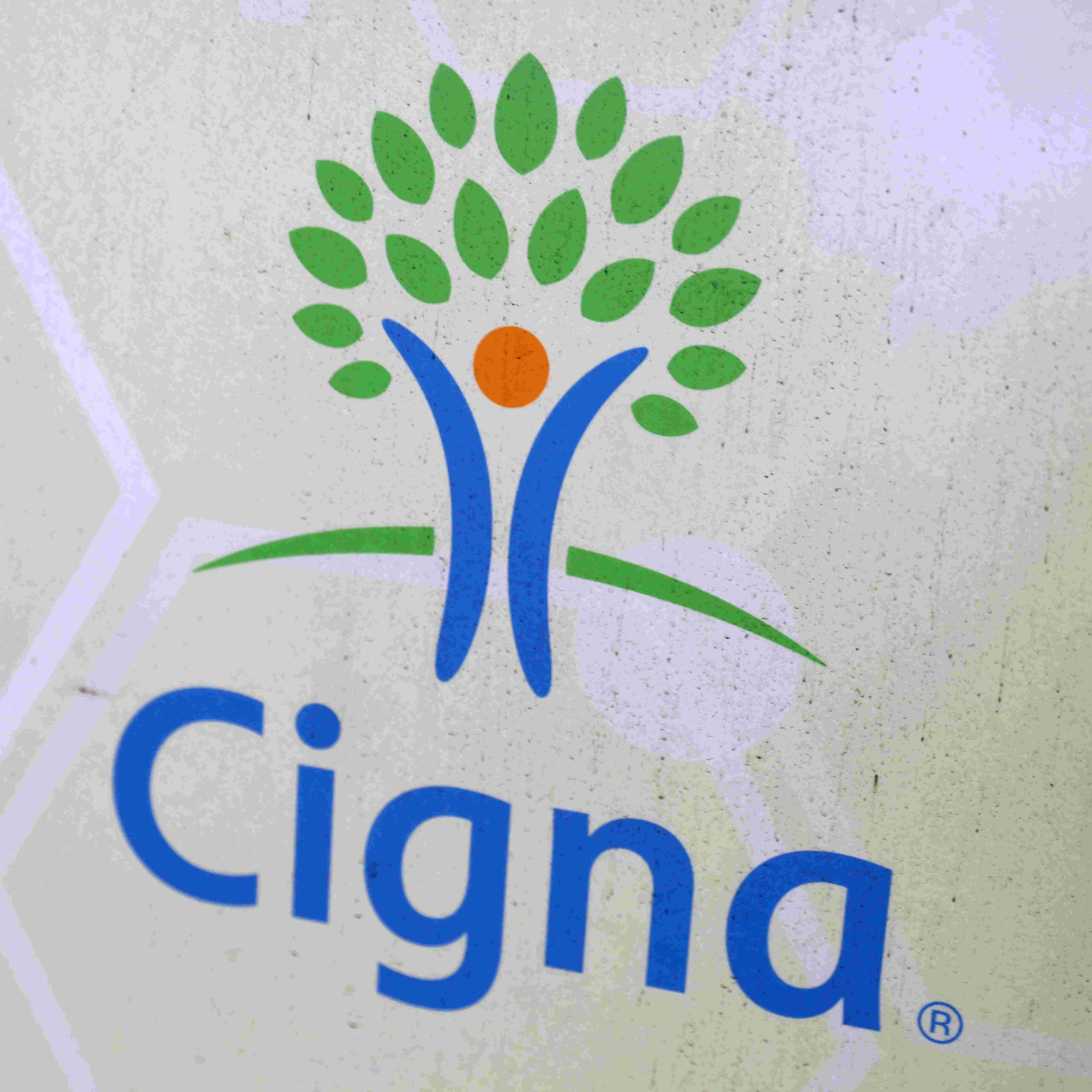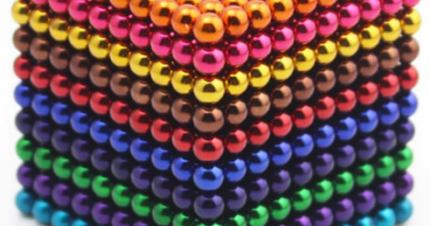11 Holiday Items That Are Secretly Dangerous For Pets
The holidays mark a fun occasion for people to decorate their homes, cook special dishes, exchange gifts with loved ones and otherwise appreciate the many joys life has to offer. For pet owners, however, the season brings a host of challenges and potential issues to pay attention to.
“The winter holidays are one of the best times of the year to get together and celebrate with loved ones, including our furry family members,” Dr. Jamie Richardson, head of veterinary medicine at Small Door Veterinary, told HuffPost. “But amidst all the festivities, it may be easy to miss some of the hazards our pets face during the holidays.”
This season brings increased temptations for pets and additional distraction for owners, so it’s important to be extra mindful around this time of year.
To help keep pets safe around the holidays, we asked Richardson and other experts to break down the holiday items that may pose a risk to dogs and cats. Read on for their warnings and advice for avoiding harm.
Christmas Trees
“If you have a tree at the center of your celebrations, it’s important to sweep or vacuum up the needles regularly, as they can be harmful if eaten,” Richardson said. “They can also get stuck between your pet’s paw pads and cause irritation or pain.”
If you have a pet that likes to climb or excitedly knocks into things, try to anchor your tree to a wall or window to ensure it doesn’t topple over and injure them. Wrapping the trunk in aluminum foil can discourage cats from climbing, as most don’t like the sound and texture.
“If you have a tree that needs watering, make sure there’s no access to stagnant water that your pet might try to drink from,” Richardson advised. “Bacteria grows very quickly in tree water, and can cause serious stomach upsets for your pet.”
Consider choosing a tree skirt that is tight-fitting or a stand with a covered bowl to make the water harder to access.
“To protect their tree, some pet parents will place gates in front of the tree or have it in a room their pet is not allowed to go in,” said Dr. Amber Karwacki, a partner doctor at Heart + Paw.
Letting your pet observe or investigate the tree before decorating may also remove some of the temptation.
“Use deterrents like citrus, bitter apple, menthol, or citronella spray on the tree,” suggested Dr. Sarah Wooten, a veterinary expert with Pumpkin Pet Insurance. “If your cat is a climber, do not leave them unsupervised around the tree. Reward positive behavior and distract your cat from unwanted behavior like climbing the tree.”
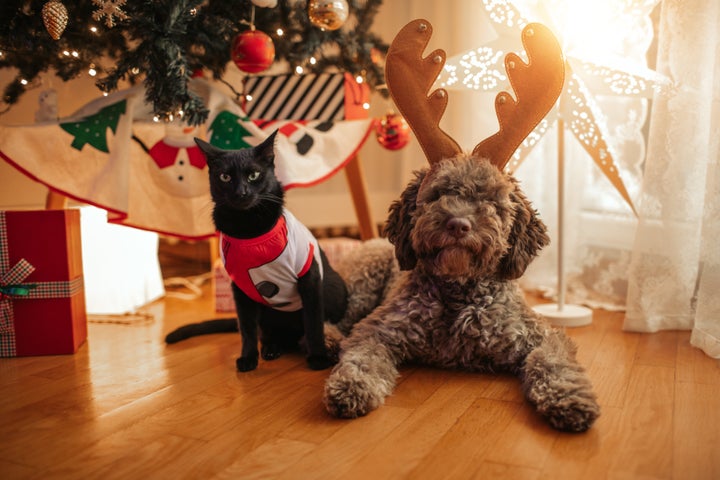
Ornaments
“Although they’re not poisonous, ornaments can have sharp edges if broken, which can cut your pet’s paws or cause punctures if eaten, so keep an eye on your pet to ensure they don’t get a hold of them,” Richardson said. “Cats are especially notorious for knocking ornaments off the tree, so ideally, you should avoid using easily breakable ornaments.”
If you must place breakable ornaments on your tree, try to hang them up on a high branch. The same goes for valuable baubles or family heirlooms you don’t want around curious mouths and noses.
“Keep ornaments out of reach of your cat so he is not tempted to swat at them,” said Dr. Kira Ramdas, president of the American Association of Feline Practitioners. “Ornaments are not made of materials that can be nibbled on or ingested by your cat.”
Make sure your ornaments are securely attached to the tree — especially the heavier, sturdier ornaments, which should also go on lower branches to avoid falling on pets should they come loose.
“You can use pet deterrent spray on all your decorations, especially feathery or soft ornaments your pet might mistake for a new toy,” added Dr. Danielle Bernal, global veterinarian with Wellness Pet Company.
Electrical Cords And String Lights
“While some homes look like a scene from the movie ‘Christmas Vacation,’ light strands, loose wires, and electric cords can be a serious hazard to your pet,” said Erin Askeland, an animal health and behavior consultant at Camp Bow Wow. “Some animals may chew cords and put themselves at risk of serious burns or electric shock. Unplug indoor lights when you are not at home, and monitor your pets around cords.”
Consider purchasing cable guards or properly taping down your cords to make them less accessible to your pets, especially if you have a chew-happy puppy or kitten. Be mindful of low-hanging tree lights and try to wrap the strings closer to the inside of the tree as well.
“Try to conceal cables under rugs or tree skirts or consider using battery-powered lights and candles and plastic ornaments to minimize any danger posed to your pets by your holiday décor,” Bernal suggested.
Pay attention to signs of potential electrical burns or shock as well.
“Red, blistered, hairless skin or drooling, not eating, and holding the mouth slightly open may give owners an indication that this has occurred,” said Dr. Jacqueline Brister, veterinarian and consultant for Embrace Pet Insurance.
Tinsel
“While beautiful on a tree, cats in particular love tinsel’s shininess and may be tempted to nibble on it,” Richardson said. “If ingested, tinsel can easily bunch up in the stomach or wrap itself around the intestines, causing serious and potentially fatal harm to your pet.”
Consider passing on the tinsel or keeping it out of reach of your furry friends to avoid possible intestinal obstructions, and seek veterinary attention if you suspect your pet has swallowed tinsel.
“Signs of gastrointestinal tract obstruction can include sleeping more, hiding away, being sick and refusing food,” said Laura Watson, a registered veterinary nurse and cat advocacy assistant at International Cat Care. “If you think your pet has eaten a non-edible object, contact your veterinary clinic immediately for advice.”
Gift-Wrapping Materials
Foreign bodies generally need to be removed surgically, so make sure you put away gift-wrapping materials as soon as you’re finished to avoid the trauma and high costs of emergency procedures.
“Dogs also like to chew wrapping paper when it is under the tree, which can cause upset stomachs and foreign bodies,” Karwacki said. “If your pet is interested in the presents, keep gifts in a closet until it is time to open them. Make sure to properly dispose of bows, ribbons, and other packaging after unwrapping gifts as they can be a hazard.”
Like tinsel, the ribbons and strings people use to wrap gifts can also pose a risk of GI obstruction for pets, particularly cats.
“The backwards-facing barbs on cats’ tongues cause them to end up swallowing stringy things even as they struggle to get them out of their mouths,” explained Dr. Jo Myers, a practicing veterinarian with Vetster. “Even though strings are small and flexible, they have a high potential to cause a particular kind of intestinal blockage that is fatal without treatment.”
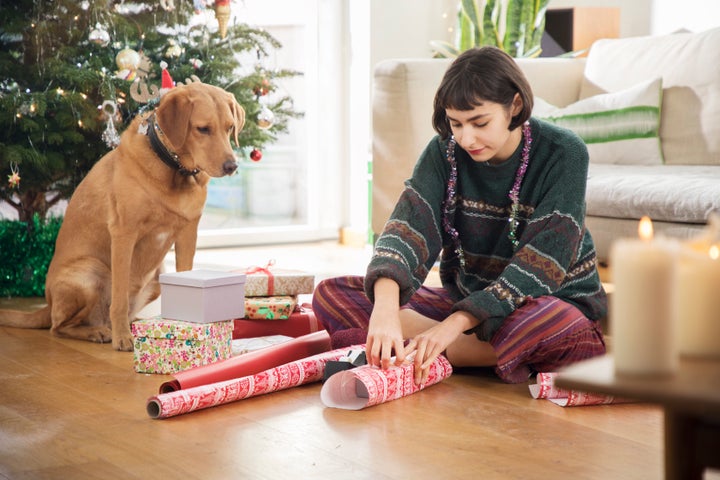
Betsie Van der Meer via Getty Images
Holiday Houseplants
“It’s important to do your research before bringing a new plant into the home no matter what time of year,” Bernal said. “Many holiday plants, such as mistletoe and holly, are toxic to pets, particularly cats, so try to avoid fresh plants around your house unless you are confident your furry friend won’t show any interest or that the plants are in a place they definitely cannot access.”
She noted that poinsettias, cedar and pine can also be hazardous for cats and dogs. Be extra careful when it comes to lilies.
“Potted plants are a common gift for hosts, and lilies are a common choice this time of year, but even tiny doses of lily plants are potentially lethal to cats,” Myers said. “They’re so toxic that exposure to just the pollen ― perhaps groomed off their fur after brushing up against the plant ― or drinking the water that cut flowers have been in is enough to cause permanent kidney damage.”
Pay attention if your pet has an upset stomach, vomiting, diarrhea, breathing issues, drooling, lethargy or other signs of illness around the holiday season, as plants might be to blame.
“Replacing your plants with fake silk equivalents [provides] lower risk, but can still be dangerous if ingested,” Bernal added. “Silk plants can be sprayed with pepper or bitter apple as a deterrent.”
Unwrapped Gifts
As loved ones gather to exchange holiday gifts, pay attention to what they unwrap and consider whether it’s safe around your pets. Items that may pose a risk should be placed out of reach.
This is especially true of toys for kids, which may look like they’re meant for a dog or cat but can contain dangerous materials.
“Be mindful of any toys containing magnets,” Myers said. “Magnets that are initially unconnected when swallowed may become attracted to each other and connect later on in the intestines. When they stick together through the intestinal wall, that tissue dies and life-threatening peritonitis is the result.”
Pay attention to the toys gifted to your pets as well.
“We all love getting our furry family members a gift for the holidays so they can join in on the festive fun,” Karwacki said. “However, the common rawhide dog bones, rawhide holiday-themed treats, and antler toys can be very dangerous to dogs. All of these are choking hazards to our furry friends.”
Festive Foods
The holiday season is a great time to prepare special dishes and sweets for friends and family to enjoy.
‘’For those with a sweet tooth, be careful that your dog or cat doesn’t get in on the action, particularly if you’re enjoying some chocolate or peppermint,” said Love Your Dog spokesperson Sadie Cornelius. “Chocolate contains a substance called ‘theobromine’ which is toxic to dogs. Peppermint has a similar effect due to the number of different chemicals used to give it that famous minty taste. Sweets also tend to have xylitol, an artificial sweetener, which can be fatal for pets.”
Seek medical assistance if your pet consumes these treats. Other dishes don’t necessarily require a veterinarian’s help but are also best kept away from hungry cats and dogs.
“A favorable festive fruit, cranberries are completely fine for our pets when dried,” Cornelius said. ” However, too much fruit can lead to stomach pains and vomiting. We recommend fruit is less than 10% of your pet’s ration on any given day. And ham might be on most of our Christmas menus this year, but it shouldn’t be on our pets’ due to high fat, high salt, and the danger of ingesting bones.”
Fatty, salty and sugary foods can cause a host of symptoms like vomiting and diarrhea when some animals eat them.
“Don’t share any table scraps with your furry family member this holiday season, especially when it comes to dessert,” Karwacki said. “Even turkey skin can be harmful because it is high in fat. Raisins, garlic, and onions are foods that are common in holiday cooking, but they are toxic to pets.”
If you feel strongly about giving human food to your pet around the holidays, he recommended sweet potato or baby carrots. Otherwise, put your leftovers away and take out any trash filled with food scraps as soon as possible.
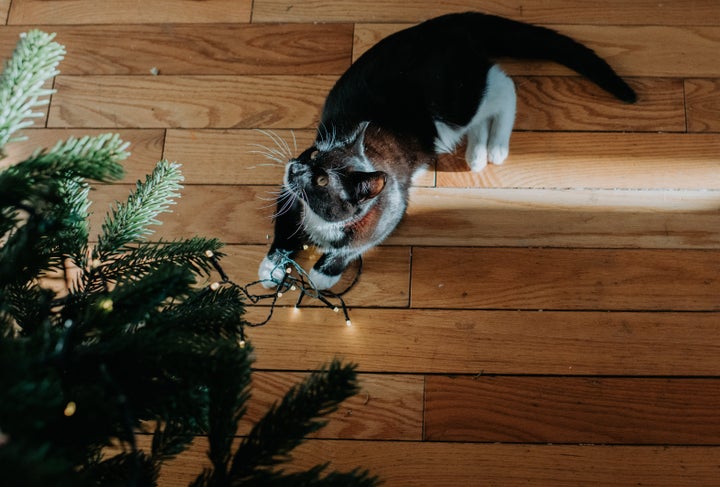
Catherine Falls Commercial via Getty Images
Candles
“Take care with lit candles or menorahs to avoid singed paws or a burned tail,” Richardson advised. “Always place them out of reach of pets, and at least 12 inches away from anything flammable in case they do accidentally get knocked over.”
Candle safety will not only help you avoid pet injury but also prevent devastating house fires.
“If you have cats that like to climb, you should try to block their access, and make sure there are no high perches nearby that they could jump from to reach the candles,” Richardson said. “Never leave your pets unsupervised whilst the candles are lit, and make sure they’re blown out before you head to bed.”
Essential Oils
Who doesn’t love filling their home with a festive scent this time of year? As with candles, however, it’s important for pet owners to consider safety when choosing how they’ll enjoy their holiday fragrance.
“Liquid potpourris pose risks because they contain essential oils and detergents that can severely damage your pet’s mouth, eyes and skin,” said Dr. Nikko Grossapoulos, a veterinarian with Zoetis. “Solid potpourris also can also cause problems if ingested.”
Pay attention to any essential oil products you bring into the house.
“Clove oil exposure can cause irritation to the skin or mouth, including ulcers, as well as neurologic and liver disease ― e.g. seizures,” Brister said. “Exposure to eucalyptus oil can lead to throwing up, loose stool, and slowing of heart, lungs and neurological functions.”
She noted that peppermint oil, tea tree oil and pine oil can also cause serious symptoms ranging from skin and mouth irritation to vomiting and fever to seizures and a coma.
“Most of these issues are associated with heavy exposure ― for example, knocking over the bottle and lapping it up or coating a large portion of the skin ― but some degree of risk exists with any level of exposure,” Brister added.
Holiday Guests’ Medications
“Guests who bring prescription or recreational drugs often account for accidental poisonings in pets during the holidays,” Wooten said. “Keep everything locked up and advise your guests to do the same.”
Drugs and alcohol can lead to severe toxicosis if dogs and cats ingest them.
“Their body size puts them at risk for higher exposure compared to that of an adult-sized person,” Brister said. “This is especially important for vape pens or gummies, in which a small animal can ingest an extremely large dose in a short period of time accidentally. Enlarged pupils, unsteadiness, twitching, sensitivity to lights and sounds, unexpected aggression, stupor, and urinating excessively can be signs a pet was exposed to drugs or alcohol.”
Paying attention to unusual symptoms and behavior in pets is a great way to avoid holiday mishaps, as is separating your furry friend from items that can pose a risk to their health and safety. Make sure you know the best way to reach emergency veterinary assistance and have your pet’s medical history and important documents on hand.
“The best way to avoid issues is to keep hazards out of reach, which is easier said than done in most households during the holidays due to all the chaos associated with visitors and other plans,” Myers noted. “Vigilance is key, along with keeping pets confined to pet-safe areas.”

